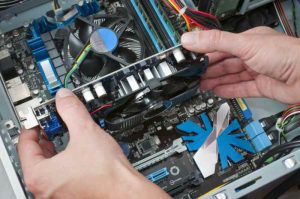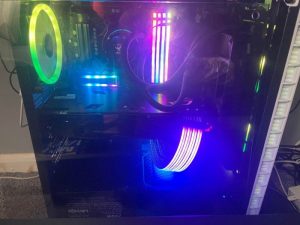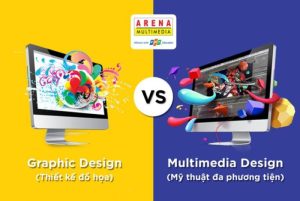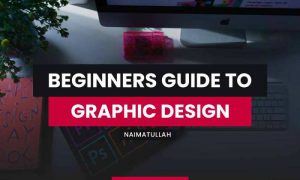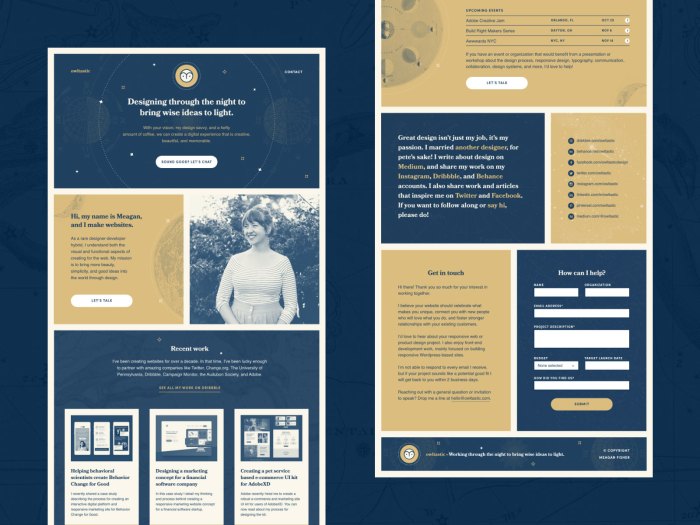
Step into the world of graphic design portfolios where creativity meets strategy and learn how to impress clients with your stellar showcase.
Discover the key elements and organization techniques that will make your portfolio stand out from the crowd.
Graphic Design Portfolio Tips

Creating a well-curated graphic design portfolio is crucial for showcasing your skills and attracting potential clients or employers. It serves as a visual representation of your capabilities and style, allowing others to evaluate your work at a glance.
Key Elements for a Graphic Design Portfolio
- High-quality Samples: Include your best work that demonstrates a range of skills and styles.
- Clear Organization: Arrange your projects in a logical order with descriptions for context.
- Contact Information: Make it easy for people to reach you by providing clear contact details.
- About Me Section: Briefly introduce yourself, your experience, and design philosophy.
- Client Testimonials: Add testimonials or reviews to build credibility and trust.
Organizing and Showcasing Projects Effectively
- Create Categories: Group similar projects together to make navigation easier for viewers.
- Use Thumbnails: Provide small previews of projects that link to the full details for a quick overview.
- Include Process Work: Show sketches, drafts, and iterations to give insight into your creative process.
- Update Regularly: Keep your portfolio fresh with new projects and remove outdated work.
Tailoring Your Portfolio for Different Clients
- Research the Client: Understand the client’s industry and preferences to customize your portfolio accordingly.
- Highlight Relevant Work: Showcase projects that align with the client’s needs or aesthetic requirements.
- Create Multiple Versions: Develop different portfolio layouts or presentations to suit various client preferences.
- Personalize Communication: Craft a cover letter or email that explains why your portfolio is a good fit for the specific client.
Electronics and Electrical
In the world of technology, understanding the differences between electronics and electrical systems is crucial. While both fields deal with the flow of electricity, they have distinct characteristics and applications.
Differences between Electronics and Electrical Systems
Electrical systems primarily focus on the generation, transmission, distribution, and utilization of electrical power. This includes wiring, motors, transformers, and other components that help in the efficient transfer of electricity. On the other hand, electronics deal with the control of the flow of electrons to achieve specific functions. This involves the use of semiconductors, integrated circuits, and other electronic components to design devices like smartphones, computers, and televisions.
Common Electrical Components in Electronic Devices
- Resistors: These components limit the flow of current in a circuit.
- Capacitors: They store and release electrical energy as needed.
- Diodes: Diodes allow current to flow in one direction only.
- Transistors: These components amplify or switch electronic signals.
- Integrated Circuits (ICs): ICs contain multiple components on a single chip, enhancing functionality.
Role of Voltage and Current in Electronics
Voltage is the force that pushes electrical current through a circuit, while current is the flow of electrons. Understanding how these two elements interact is essential in designing and troubleshooting electronic devices.
Ohm’s Law, V=IR, demonstrates the relationship between voltage, current, and resistance in a circuit.
Importance of Safety Measures in Electronics and Electrical Systems
It is crucial to prioritize safety when working with electronics and electrical systems to prevent accidents and damage. Always follow proper procedures, use insulated tools, and avoid working on live circuits. Remember, safety first!
Computer Repair and Consulting
Computers are an essential part of our daily lives, and when they encounter issues, it can be frustrating. This is where computer repair and consulting services come in to help individuals and businesses get back up and running smoothly.
Diagnosing and Troubleshooting Computer Issues
When it comes to diagnosing and troubleshooting computer issues, it is essential to follow a systematic approach:
- Start by gathering information from the user about the problem they are experiencing.
- Perform basic troubleshooting steps such as checking cables, restarting the computer, or running diagnostic tools.
- Identify the root cause of the issue by conducting further tests or analyzing error messages.
- Provide a detailed explanation of the problem to the customer along with possible solutions.
Setting up a Computer Repair or Consulting Business
If you are looking to start a computer repair or consulting business, consider the following tips:
- Define your target market and services offered to cater to specific customer needs.
- Invest in quality tools and software to perform efficient repairs and diagnostics.
- Establish a strong online presence through a professional website and social media to attract clients.
- Provide excellent customer service to build trust and loyalty with your clients.
Importance of Customer Service in Computer Repair and Consulting
Customer service plays a crucial role in the success of a computer repair and consulting business:
- Effective communication with customers helps in understanding their issues and providing accurate solutions.
- Timely responses to inquiries and transparent pricing build trust with clients and encourage repeat business.
- Going the extra mile to ensure customer satisfaction can lead to positive reviews and referrals.
Common Challenges Faced by Computer Repair Technicians and Consultants
Computer repair technicians and consultants often encounter the following challenges:
- Keeping up with rapidly evolving technology and staying updated on the latest trends and solutions.
- Dealing with difficult or irate customers who may be frustrated with their computer issues.
- Balancing workload and managing time effectively to provide timely service to all clients.
Data Communication
Data communication is the process of exchanging data between two devices through a transmission medium such as cables or wireless signals. In modern technology, data communication is essential for various applications, including internet browsing, messaging, file sharing, and more.
Methods of Data Transmission in Networking
- Wired Transmission: Involves using physical cables to transmit data, such as Ethernet cables or fiber optics.
- Wireless Transmission: Utilizes radio waves or infrared signals to transmit data without the need for physical cables.
- Satellite Transmission: Involves communication via satellites, commonly used for long-distance and global communication.
Role of Protocols in Data Communication
- Protocols define the rules and conventions for communication between devices, ensuring data is transmitted accurately and efficiently.
- Common protocols include TCP/IP, HTTP, FTP, and SMTP, each serving specific functions in data communication.
Examples of Data Communication Technologies
- Wi-Fi: Enables wireless data transmission within a local area network, commonly used in homes, offices, and public spaces.
- Bluetooth: Allows for short-range communication between devices, commonly used for connecting smartphones, headphones, and other peripherals.
- 4G/5G Networks: Provide high-speed data transmission for mobile devices, enabling seamless internet connectivity on the go.
Computers E-Books
In today’s digital age, e-books have revolutionized the way we access and consume information. When it comes to computer-related topics, e-books offer a multitude of benefits for both readers and authors alike.E-books provide instant access to a vast library of computer knowledge, allowing readers to quickly search for specific topics, bookmark important sections, and easily navigate through the content. They are also environmentally friendly, as they reduce the need for paper and ink, making them a sustainable choice for avid readers.
Benefits of E-books for Computer-related Topics
- Convenience of access anytime, anywhere
- Search and find specific information quickly
- Environmentally friendly option
Popular Platforms for Accessing and Reading E-books on Computers
- Amazon Kindle
- Apple Books
- Google Play Books
- Kobo
Tips for Authors or Publishers on Creating E-books about Computers
- Ensure clear and organized formatting
- Include interactive elements like links or videos
- Optimize for different devices and screen sizes
- Promote your e-book through social media and online platforms
Must-read E-books on Computer Technology
- “The Pragmatic Programmer” by Andrew Hunt and David Thomas
- “Clean Code: A Handbook of Agile Software Craftsmanship” by Robert C. Martin
- “Code: The Hidden Language of Computer Hardware and Software” by Charles Petzold
- “Cracking the Coding Interview” by Gayle Laakmann McDowell
Graphics and Multimedia
When it comes to multimedia content, graphics play a crucial role in enhancing the overall user experience. Graphics are visual elements like images, illustrations, and animations that are used to convey information and engage the audience. Multimedia, on the other hand, refers to the integration of different forms of media such as text, audio, video, and animations to create an interactive and engaging experience for the users.
Importance of High-Quality Graphics in Multimedia Projects
High-quality graphics are essential in multimedia projects as they help in capturing the audience’s attention, conveying complex information in a visually appealing manner, and creating a memorable user experience. Whether it’s a website, video, or presentation, high-quality graphics can significantly impact how the content is perceived and can make it more engaging and interactive.
- Graphics enhance visual appeal and aesthetics of the multimedia content.
- High-quality graphics help in storytelling and conveying emotions effectively.
- Graphics improve user engagement and retention of information.
Popular Software Tools for Creating Graphics and Multimedia Content
There are several popular software tools available for creating graphics and multimedia content, each with its unique features and capabilities. Some of the widely used tools include Adobe Creative Suite (Photoshop, Illustrator, InDesign), Canva, CorelDRAW, Blender, and After Effects.
- Adobe Creative Suite: Known for its versatility and professional-grade tools for graphic design, photo editing, and video production.
- Canva: User-friendly platform with a wide range of templates and design elements for creating graphics for social media, presentations, and marketing materials.
- Blender: Open-source software for 3D modeling, animation, and rendering, popular among designers and animators.
Examples of Successful Multimedia Projects Showcasing Excellent Graphic Design
Successful multimedia projects that showcase excellent graphic design are not only visually appealing but also effectively communicate the intended message to the audience. Some examples include:
- The New York Times’ interactive data visualizations combining text, images, and animations to tell compelling stories.
- Apple’s product launch events incorporating high-quality graphics, videos, and animations to create excitement and showcase product features.
- National Geographic’s multimedia articles featuring stunning photography, videos, and interactive elements to engage readers and educate them about various topics.
Computers Hardware
When it comes to computer hardware, it’s essential to understand the different components that make up a computer system. From the processor to the memory, each part plays a vital role in the overall functionality of the computer.
Components of Computer Hardware
- The Central Processing Unit (CPU) is often referred to as the brain of the computer, responsible for executing instructions and performing calculations.
- Random Access Memory (RAM) provides temporary storage for data that the CPU is currently working on, allowing for quick access and retrieval.
- The Hard Disk Drive (HDD) or Solid State Drive (SSD) stores permanent data such as the operating system, applications, and files.
- The Graphics Processing Unit (GPU) handles graphics processing tasks, essential for gaming, video editing, and graphic design.
Importance of Compatibility in Computer Hardware
Ensuring compatibility when selecting computer hardware is crucial to avoid issues such as system crashes, performance bottlenecks, and hardware failures.
- Check the motherboard specifications to ensure that the hardware components you choose are supported.
- Consider factors like power supply requirements, physical size constraints, and connectivity options when upgrading or replacing hardware.
Tips for Upgrading or Replacing Computer Hardware Components
- Research and plan your upgrades carefully to ensure compatibility and optimal performance.
- Backup important data before making any hardware changes to avoid data loss.
- Follow manufacturer guidelines and recommendations when installing new hardware components.
Essential Computer Hardware Tools for Beginners
- Screwdriver set with various heads for opening computer cases and securing hardware components.
- Anti-static wrist strap to prevent damage from static electricity when handling sensitive hardware.
- Thermal paste for ensuring proper heat transfer between the CPU and heat sink.
Concluding Remarks

As you wrap up your portfolio journey, remember that a well-crafted showcase can open doors to exciting opportunities in the design world.
Frequently Asked Questions
How important is a graphic design portfolio?
A well-curated portfolio is crucial as it showcases your skills, style, and experience to potential clients or employers.
How should I tailor my portfolio for different clients?
Customize your portfolio by highlighting projects that align with the specific needs or aesthetic preferences of each client.
What are the key elements to include in a graphic design portfolio?
Essential elements include a strong bio, diverse projects, client testimonials, and a clear design style.
How can I effectively showcase my projects in a portfolio?
Use high-quality images, provide project descriptions, and consider creating case studies to give context to your work.
